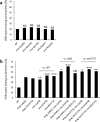Repulsive guidance molecule acts in axon branching in Caenorhabditis elegans
- PMID: 34785759
- PMCID: PMC8595726
- DOI: 10.1038/s41598-021-01853-8
Repulsive guidance molecule acts in axon branching in Caenorhabditis elegans
Abstract
Repulsive guidance molecules (RGMs) are evolutionarily conserved proteins implicated in repulsive axon guidance. Here we report the function of the Caenorhabditis elegans ortholog DRAG-1 in axon branching. The axons of hermaphrodite-specific neurons (HSNs) extend dorsal branches at the region abutting the vulval muscles. The drag-1 mutants exhibited defects in HSN axon branching in addition to a small body size phenotype. DRAG-1 expression in the hypodermal cells was required for the branching of the axons. Although DRAG-1 is normally expressed in the ventral hypodermis excepting the vulval region, its ectopic expression in vulval precursor cells was sufficient to induce the branching. The C-terminal glycosylphosphatidylinositol anchor of DRAG-1 was important for its function, suggesting that DRAG-1 should be anchored to the cell surface. Genetic analyses suggested that the membrane receptor UNC-40 acts in the same pathway with DRAG-1 in HSN branching. We propose that DRAG-1 expressed in the ventral hypodermis signals via the UNC-40 receptor expressed in HSNs to elicit branching activity of HSN axons.
© 2021. The Author(s).
Conflict of interest statement
The authors declare no competing interests.
Figures







Similar articles
-
UNC-6 expression by the vulval precursor cells of Caenorhabditis elegans is required for the complex axon guidance of the HSN neurons.Dev Biol. 2007 Apr 15;304(2):800-10. doi: 10.1016/j.ydbio.2007.01.028. Epub 2007 Jan 25. Dev Biol. 2007. PMID: 17320069
-
The POU transcription factor UNC-86 controls the timing and ventral guidance of Caenorhabditis elegans axon growth.Dev Dyn. 2011 Jul;240(7):1815-25. doi: 10.1002/dvdy.22667. Epub 2011 Jun 8. Dev Dyn. 2011. PMID: 21656875 Free PMC article.
-
A developmental timing switch promotes axon outgrowth independent of known guidance receptors.PLoS Genet. 2010 Aug 5;6(8):e1001054. doi: 10.1371/journal.pgen.1001054. PLoS Genet. 2010. PMID: 20700435 Free PMC article.
-
Localization mechanisms of the axon guidance molecule UNC-6/Netrin and its receptors, UNC-5 and UNC-40, in Caenorhabditis elegans.Dev Growth Differ. 2012 Apr;54(3):390-7. doi: 10.1111/j.1440-169X.2012.01349.x. Dev Growth Differ. 2012. PMID: 22524608 Review.
-
Formation of longitudinal axon pathways in Caenorhabditis elegans.Semin Cell Dev Biol. 2019 Jan;85:60-70. doi: 10.1016/j.semcdb.2017.11.015. Epub 2017 Nov 20. Semin Cell Dev Biol. 2019. PMID: 29141179 Review.
Cited by
-
APOE4-induced patterned behavioral decline and neurodegeneration requires endogenous tau in a C. elegans model of Alzheimer's disease.bioRxiv [Preprint]. 2025 May 15:2025.05.06.652574. doi: 10.1101/2025.05.06.652574. bioRxiv. 2025. PMID: 40463229 Free PMC article. Preprint.
-
The geometry of photopolymerized topography influences neurite pathfinding by directing growth cone morphology and migration.J Neural Eng. 2024 Apr 4;21(2):026027. doi: 10.1088/1741-2552/ad38dc. J Neural Eng. 2024. PMID: 38547528 Free PMC article.
-
Glia Development and Function in the Nematode Caenorhabditis elegans.Cold Spring Harb Perspect Biol. 2024 Dec 2;16(12):a041346. doi: 10.1101/cshperspect.a041346. Cold Spring Harb Perspect Biol. 2024. PMID: 38565269 Free PMC article. Review.
-
A memristive circuit for self-organized network topology formation based on guided axon growth.Sci Rep. 2024 Jul 18;14(1):16643. doi: 10.1038/s41598-024-67400-3. Sci Rep. 2024. PMID: 39025960 Free PMC article.
References
Publication types
MeSH terms
Substances
Grants and funding
LinkOut - more resources
Full Text Sources
Research Materials
Miscellaneous

